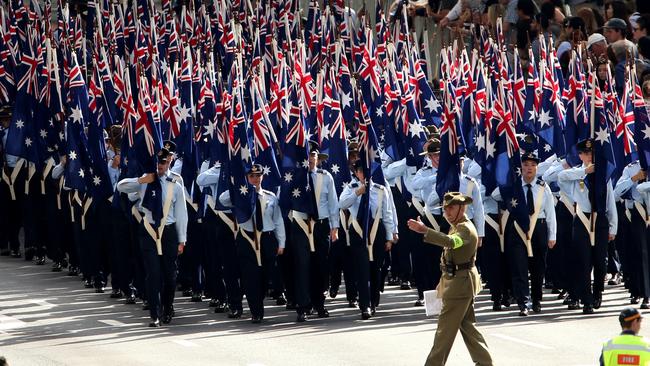Call for a La Perouse memorial to honour Aboriginal soldiers in historical and modern conflicts
A MEMORIAL to Aboriginal soldiers who fought in battles from frontier wars to modern conflicts should be created at La Perouse with a “keeping place” of indigenous artefacts, a prominent elder has said.

Southern Courier
Don't miss out on the headlines from Southern Courier. Followed categories will be added to My News.
- War hero’s remarkable story of survival as a Prisoner of War
- Where to play two-up on Anzac Day in Sydney
A MEMORIAL to Aboriginal soldiers who fought in battles from frontier wars to modern day conflicts should be created at La Perouse with a “keeping place” of indigenous artefacts, a prominent elder has said.
Pastor Ray Minniecon, co-founder of the Coloured Digger Project at Redfern, called for a monument honouring all Aboriginal defence force members such as WWI digger Private Douglas Grant who is buried at the Eastern Suburbs Memorial Park in Matraville.
The Ngadjonji man, who was adopted by a Scottish couple as a toddler after his parents were believed to have been killed, enlisted with the 13th Battalion in 1916 and left for France aged 30 but was captured and held as a POW for two years.

After the war, Private Grant, who lived for a while in the First War Veteran’s Home on Bare Island, was unable to secure steady work and faced racism, discrimination and suffered depression before his death at the Prince Henry Hospital, Little Bay in 1951.
“Douglas Grant really is one of these special characters,” Pastor Minniecon, whose grandfather Private James Lingwoodock fought with the 11th Lighthorse Brigade in WWI, said.
“Like other Aboriginal soldiers they are legends.”
Making Aboriginal history, culture and people such as Bidjigal man Pemulwuy, who resisted the arrival of the First Fleet in 1788, part of the national story of “how Sydney came to be” was a long and slow process, he said.
“We are getting there,” Pastor Minniecon said.
“All of these kinds of issues whether it be the frontier wars to overseas conflicts or conflicts we are facing today, the stories are so powerful and so rich.
“They inspire us. They are very inspirational when we are fighting against so many uncertainties, they are a powerful force.”

He said Private Grant and other indigenous soldiers faced racism after the war and were denied access to settlements, were barred from RSL clubs and forbidden from taking part in Anzac Day marches.
“Many of their children were forcibly removed,” Pastor Minniecon, said.
“They fought on the Western Front and then fought racism back home.”
He said their legacy had been forgotten or written out of history even though an estimated 200 indigenous soldiers fought in WWI.
Pastor Minniecon said the names of many Aboriginal soldiers were unknown and he was encouraging indigenous families to come forward with stories of their military ancestors.
Recent research by historian Peter Bakker located Aboriginal soldier Jack Alick Bond, who served in the Boer War, and died at La Perouse in 1941 aged 68.
He received a medal in 1901 for the South African Campaign and the Southern Metropolitan Cemeteries Trust is looking at organising a memorial stone for him at the Eastern Suburbs Memorial Park where he is buried.
“More than putting it into a book or teaching it in schools, we do need the memorials where we can go and pay homage to these heroes to make sure their memories are not forgotten,” Pastor Minniecon said.

“We do need, for example, a keeping place for Aboriginal history and stories and artefacts and other things.”
Pastor Minniecon said he also wanted to see Aboriginal human remains such as bones and skulls that were still displayed in museums across Europe to be brought back to Australia for a proper burial.
“We are not museum pieces,” he said. “We still have skeletons and bones in some of these museums.
“There are old Aboriginal shields and artefacts there. People had taken them from here and they need to be returned.”
Randwick Council is setting up a trust to oversee a project to create a monument at La Perouse to “bookend” the Anzac Pde corridor to Moore Park where a 100-year-old Anzac obelisk stands.
A La Perouse Aboriginal Land Council representative would be involved in the project which had come about after a campaign by Margaret Hope, whose father fought in WWI.
“I see this memorial as not only important for remembrance but also for education and for the inclusion of all who served, particularly the many indigenous soldiers,” Ms Hope said.



